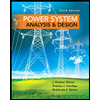
Microelectronic Circuits (the Oxford Series In Electrical And Computer Engineering)
8th Edition
ISBN: 9780190853464
Author: Adel S. Sedra, Kenneth C. (kc) Smith, Tony Chan Carusone, Vincent Gaudet
Publisher: Oxford University Press
expand_more
expand_more
format_list_bulleted
Concept explainers
Question
Chapter 4, Problem D4.79P
(a)
To determine
The rms voltage that will appear across the secondary of the transformer.
(b)
To determine
The required value of filter capacitor.
(c)
To determine
Maximum reverse voltage across the diode.
PIV rating of diode.
(d)
To determine
Average current through the diode.
(e)
To determine
Peak diode current.
Expert Solution & Answer
Want to see the full answer?
Check out a sample textbook solution
Students have asked these similar questions
Don't use ai to answer I will report you answer
Don't use ai to answer I will report you answer
Don't use ai to answer I will report you answer
Chapter 4 Solutions
Microelectronic Circuits (the Oxford Series In Electrical And Computer Engineering)
Ch. 4.1 - Prob. 4.1ECh. 4.1 - Prob. 4.2ECh. 4.1 - Prob. 4.3ECh. 4.1 - Prob. 4.4ECh. 4.1 - Prob. 4.5ECh. 4.1 - Prob. 4.6ECh. 4.2 - Prob. 4.7ECh. 4.2 - Prob. 4.8ECh. 4.2 - Prob. 4.9ECh. 4.2 - Prob. 4.10E
Ch. 4.2 - Prob. 4.11ECh. 4.3 - Prob. 4.12ECh. 4.3 - Prob. D4.13ECh. 4.3 - Prob. 4.14ECh. 4.5 - Prob. 4.17ECh. 4.5 - Prob. 4.18ECh. 4.5 - Prob. D4.19ECh. 4.6 - Prob. 4.21ECh. 4.6 - Prob. 4.22ECh. 4.6 - Prob. 4.23ECh. 4.6 - Prob. 4.24ECh. 4.6 - Prob. 4.25ECh. 4.6 - Prob. 4.26ECh. 4.6 - Prob. 4.27ECh. 4.7 - Prob. 4.28ECh. 4 - Prob. 4.2PCh. 4 - Prob. 4.3PCh. 4 - Prob. 4.4PCh. 4 - Prob. 4.6PCh. 4 - Prob. D4.13PCh. 4 - Prob. 4.14PCh. 4 - Prob. 4.18PCh. 4 - Prob. 4.25PCh. 4 - Prob. 4.26PCh. 4 - Prob. 4.31PCh. 4 - Prob. 4.32PCh. 4 - Prob. 4.33PCh. 4 - Prob. 4.35PCh. 4 - Prob. D4.39PCh. 4 - Prob. 4.40PCh. 4 - Prob. 4.41PCh. 4 - Prob. 4.42PCh. 4 - Prob. 4.49PCh. 4 - Prob. 4.50PCh. 4 - Prob. 4.51PCh. 4 - Prob. 4.52PCh. 4 - Prob. 4.53PCh. 4 - Prob. 4.54PCh. 4 - Prob. 4.55PCh. 4 - Prob. 4.56PCh. 4 - Prob. 4.58PCh. 4 - Prob. D4.59PCh. 4 - Prob. D4.60PCh. 4 - Prob. D4.61PCh. 4 - Prob. D4.72PCh. 4 - Prob. 4.75PCh. 4 - Prob. 4.76PCh. 4 - Prob. 4.77PCh. 4 - Prob. D4.78PCh. 4 - Prob. D4.79PCh. 4 - Prob. D4.80PCh. 4 - Prob. D4.81PCh. 4 - Prob. D4.82PCh. 4 - Prob. 4.83PCh. 4 - Prob. 4.84P
Knowledge Booster
Learn more about
Need a deep-dive on the concept behind this application? Look no further. Learn more about this topic, electrical-engineering and related others by exploring similar questions and additional content below.Similar questions
- In Experiment PD controller How would the equation become if it were Kp=1 KD=0/0.1/0.5/1/10 s+1 0.02s+1arrow_forwardDon't use ai to answer I will report you answerarrow_forward4. Discussion: GINEE Compare between theoretical combination effect of Kp and KD at first order and second order systems regarding steady-state errors and transient responses with the practical obtained results whenever applying step input signalın Experiment PD controller و المهندسة الكهربائيةarrow_forward
- b C Is 3601116-67 Bre ✓ BIb ≤5K 20k e 0-25K 7. Zo Z Zb B=100, Ble=1Kr Zb=S & Zin = S, Zo=S, AV=Sarrow_forwardDon't use ai to answer I will report you answerarrow_forward4. Discussion: GINEE Compare between theoretical combination effect of Kp and KD at first order and second order systems regarding steady-state errors and transient responses with the practical obtained results whenever applying step input signalın Experiment PI controller و الهندسة الكهربائيةarrow_forward
- همسة 4. Discussion: Compare between theoretical combination effect of Kp, KI and KD at second order systems regarding steady-state errors and transient responses with the practical obtained results whenever applying step input signalln Experiment PID Controllerarrow_forwardHi there! I’m working on some practice questions and would appreciate your help. I’ve uploaded two images: the first contains the initial questions (with the second part also typed out below), and the second image shows the final section of the worksheet. Could you please assist me with these?THE QUESTION NUMBERS ARE IN ORDER. 1b). Suppose the flip-flops are 74F74 devices and the AND gates are 74F08 devices. Let maxtpd,D=9ns, maxtsu,D=3ns, and maxtpd,AND=6ns. What is the maximum clock frequency at which the circuit can operate reliably? 2. Compare serial transmission and parallel transmission and discuss their advantages and disadvantages. 3. Explain briefly how the slave can protect itself from being overwhelmed by the master in I2 4. A hypothetical logic family has the following specifications. VOH=4.6V VIH=4.0V VOL=0.5V…arrow_forwardهمسة 4. Discussion: Compare between theoretical combination effect of Kp, KI and KD at second order systems regarding steady-state errors and transient responses with the practical obtained results whenever applying step input signal in Experiment PI Controllerarrow_forward
arrow_back_ios
SEE MORE QUESTIONS
arrow_forward_ios
Recommended textbooks for you
 Power System Analysis and Design (MindTap Course ...Electrical EngineeringISBN:9781305632134Author:J. Duncan Glover, Thomas Overbye, Mulukutla S. SarmaPublisher:Cengage Learning
Power System Analysis and Design (MindTap Course ...Electrical EngineeringISBN:9781305632134Author:J. Duncan Glover, Thomas Overbye, Mulukutla S. SarmaPublisher:Cengage Learning

Power System Analysis and Design (MindTap Course ...
Electrical Engineering
ISBN:9781305632134
Author:J. Duncan Glover, Thomas Overbye, Mulukutla S. Sarma
Publisher:Cengage Learning